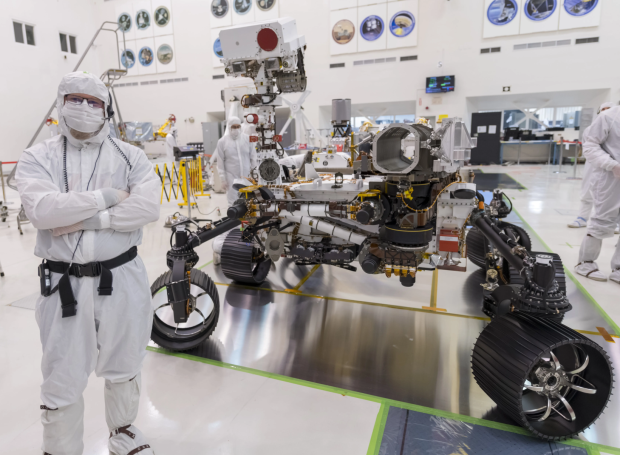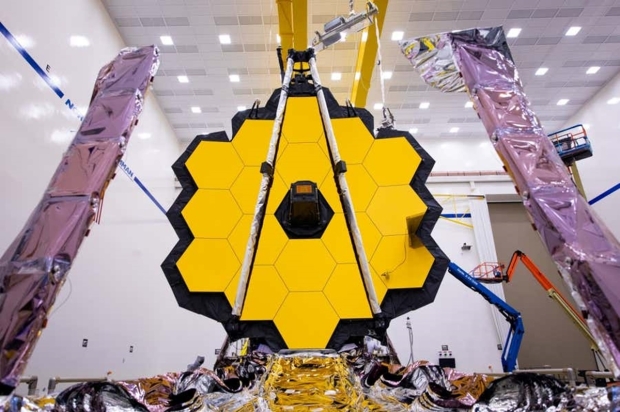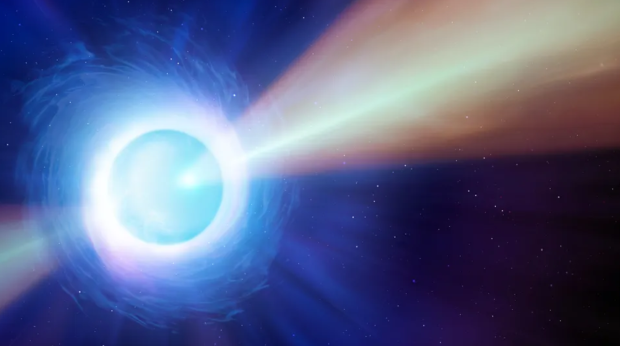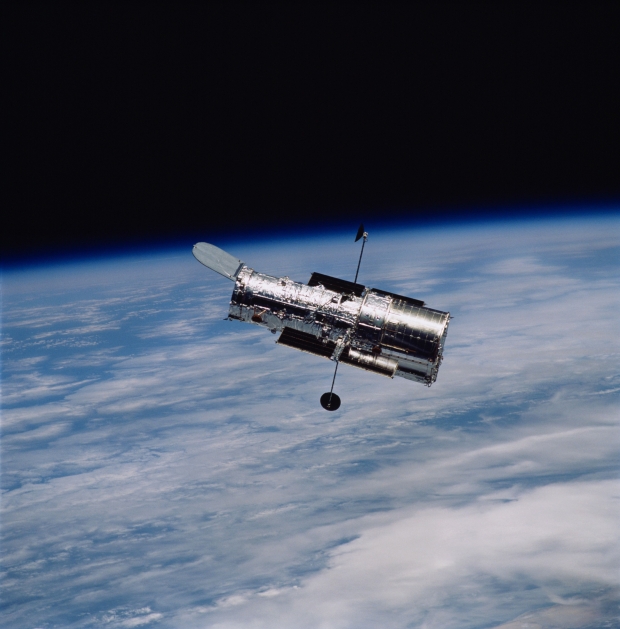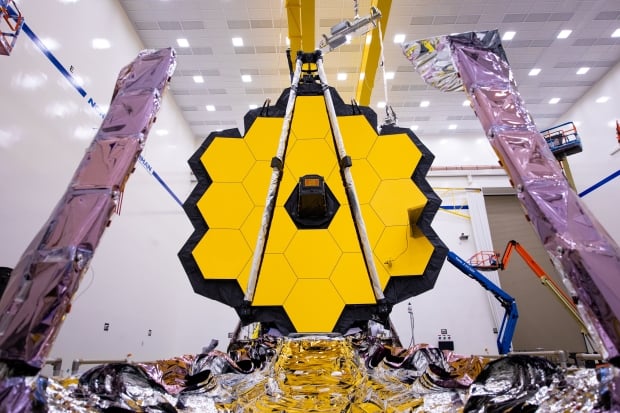Science, Space, Health & Robotics News - Page 22
Here's where you can watch the Cybertruck Delivery Event with Elon Musk
After delays through production and manufacturing issues that lasted many years, the time has finally come, as Tesla is about to deliver the very first Cybertruck.
The highly-anticipated moment has been simply titled the "Cybertruck Delivery Event" and will be held at the Texas Gigafactory in Austin, Texas. For those that can't make it there in person, the entire event is going to be live-streamed, with the video being available on X at noon P.T. (3 p.m. ET), on Nov. 30. The details surrounding the event are somewhat vague, but given by the title the event will include Tesla delivering its first Cybertruck's to customers that pre-ordered the vehicle back in 2019 when it was first announced.
It can be expected that Tesla won't be able to deliver many Cybertruck's to customers across the day, as company CEO Elon Musk previously explained that Tesla is currently in the process of ramping up production of the Cybertruck to fulfill its pre-orders. Musk said that it would take Tesla five years of manufacturing to complete every single Cybertruck order. At its current rate of manufacturing, Tesla is making about 10 Cybertrucks a day, with expectations of reaching 250,000 a year by 2025.
NASA announces its iconic space telescope has stopped working
NASA has taken to its blog and social channels to announce that the Hubble Space Telescope has stopped working following the detection of a gyroscope
The space agency explained via its blogpost that the Hubble Space Telescope entered safe mode on November 23 due to an "ongoing gyroscope (gyro) issue", and that the space telescope's instruments remain in good health. NASA further explained that Hubble entered into safe mode automatically when one of its three gyroscopes provided faulty readings. For those that don't know, Hubble's gyro's measure the turn rates of telescope, which is a component of the telescope knowing which direction it's pointing in.
Furthermore, NASA revealed that Hubble first entered into safe mode on November 19, but was promptly recovered by ground teams that were able to get Hubble back to an appropriate level for scientific operations. However, the following day, the gyro problem reared its head again, resulting in scientific operations being suspended again on November 21, which was followed by another recovery and then another failure on November 23.
Continue reading: NASA announces its iconic space telescope has stopped working (full post)
Scientists discover six alien worlds that are an exceptional hidden jewel in the Milky Way
A team of scientists has discovered six exoplanets orbiting a star called HD 110076, and what's interesting about these exoplanets is that they are in a rare phenomenon known as a chain of resonance.
So, what is a chain of resonance? This phenomenon occurs when two bodies orbiting a third body interact with each other gravitationally, and their orbital periods line up. Notably, these orbital periods don't have to line up 1:1. An example of this phenomenon is Pluto and Neptune - Pluto completes 2 orbits around the Sun for every 3 of Neptune's, creating a resonance of 2:3. Another example is some of Jupiter's moons such as Ganymede, Europa, and Io. For every 1 of Ganymede's orbits, Europa completes 2 orbits and Io 4 orbits, creating a 1:2:4 chain.
Using telescope's, the researchers discovered six exoplanets that vary in size from 1.94 to 2.85 times the size of Earth. As for their orbital periods; 9.11 days, 13.67 days, 20.52 days, 30.79 days, 41.06 days, and 54.77 days (from the innermost exoplanet to the outermost). Their chain of resonance is as follows: 3:2, 3:2, 3:2, 4:3, and 4:3. This discovery marks just the sixth system known to date with six exoplanets in a chain of resonance, and due to the chain of resonance still being untouched, it represents a region of space that has hardly been influenced by outside forces such as asteroid impacts and planetary migration.
NASA technician reveals he crashed a Mars rover two weeks before launch
Former NASA technician Chris Lewicki has revealed that he accidentally crashed the Spirit Mars rover two weeks before it was meant to launch.
The former NASA technician took to his website to reveal the behind-the-scenes story that took place in February 2003 at NASA's Jet Propulsion Laboratory, where it was like any other day at work. However, this day, Lewicki was testing the Rock Abrasion Tool (RAT), a tool designed to cut into Martian rock and reveal just beneath its surface. To verify the integrity of the motors powering the RAT, Lewicki sent an electric charge to the components and checked the chart reading. A smooth decreasing line on the chart indicates a functioning motor, while spikes indicate problems.
Lewicki's chart during this test was not "like anything we had seen before. It did not even look like a broken motor. It was decidedly - something else." Here's where it went wrong.
NASA's Webb hits milestone with a significant discovery in an exoplanet's atmosphere
The James Webb Space Telescope (JWST) has pointed its instruments at the exoplanet named WASP-80 b, leading to the first time Webb has discovered methane in the atmosphere of an exoplanet.
The discovery can be traced back to recently published findings in the scientific journal Nature, and also NASA's website where it explains that while methane has been detected in abundance within our solar system (Jupiter, Saturn, Uranus and Neptune), it hasn't been discovered in the atmosphere of transiting exoplanets by space-based spectroscopy.
Webb honed its instruments on the exoplanet WASP-80 b, which researchers describe as a "warm Jupiter" as its similar in size and mass to the planet, but is approximately 1,025 Fahrenheit. WASP-80 b is located 163 light-years away from Earth within the constellation Aquila, and according to the researchers behind the study there is clear evidence for absorption from water and methane within the atmosphere of WASP-80 b.
NASA announces it discovered 300 objects shooting gamma-rays into deep space
NASA has taken to its YouTube channel to announce the discovery of 300 additional pulsars that are shooting out the most powerful form of known energy in the universe.
Pulsars are neutron stars that are spinning, and neutron stars are the leftover remains of a star that has gone supernova, the exhaustion of all its fuel, and its end-of-life stage. The corpses of a once bright star are neutron stars, and approximately 10% of all pulsars shoot gamma rays from their poles, making their discovery prominent. So, why do pulsars shoot the most powerful form of energy from their poles?
Pulsars, like neutron stars, are extremely dense, with only a teaspoon of a neutron star weighing about 4 billion tons, or as much as 10,000 Empire State Buildings. This density, combined with its extremely strong magnetic field, creates funnels at the pulsar's poles. These funnels accelerate particles to incredible speeds, creating two beams of light from their poles. Since the poles of the magnetic field aren't aligned with its axis of spin, the beams of light are shot into random directions in space.
World's most powerful space telescope photographs a newborn star within a cosmic crib
NASA's James Webb Space Telescope (JWST) has pointed its extremely powerful instruments at a region of space that contains newborn stars.
Astronomers have captured an image of a Herbig-Haro object and released it as one of Webb's latest images, explaining the significance of such a photograph and how it plays into the evolution of stars. NASA's JWST has pointed its Near-InfraRed Camera (NIRCam) instrument at HH 797, a luminous cloud of gas and dust that resides approximately 1,000 light years from Earth. HH 797 is the long strip of gaseous material found taking up the majority of the bottom half of the above image.
Joining HH 797 is the young open star cluster called IC 343, located on the right-hand side of the image. So, why is this image so special? Newborn stars, more specifically named protostars, spew out jets of high-speed stellar wind that collide with nearby dust and gas. This collision produces the interaction we can see in the above image. Previously, astronomers believed that the string of gas seen at the bottom of the image was caused by just one newborn star, but Webb's observations have revealed the presence of two newborn stars.
Scientists discover element in Apollo lunar sample that may revolutionize living on the moon
A team of researchers analyzing lunar samples acquired during the Apollo missions has discovered a key ingredient that may lead to an altering of the general understanding of the Moon's composition.
The research comes from the US Naval Research Laboratory, which NASA gave lunar samples to for an updated analysis of their composition. According to the study that was published in the scientific journal Nature, the team discovered traces of hydrogen within lunar soil sample 79221. Why is this important? Firstly, researchers know the Moon has a large presence of ice at its poles, and this ice can be broken down into its two components, hydrogen and oxygen.
These two molecules can be used by astronauts living on the lunar surface for oxygen, and also for rocket fuel to conduct trips back to Earth, or beyond the Moon. Essentially, discovering water ice on the surface of the Moon is discovering resources that, if utilized correctly and efficiently, will enable astronauts to have a sustained flow of transportation and oxygen while exploring the surface of the Moon.
NASA telescope captures the violent past of an object millions of light years away
NASA has honed the instruments aboard the Hubble Space Telescope at a distant cosmic object that had an extremely violent past.
Using data acquired by its Advanced Camera for Survey's, NASA and the European Space Agency's Hubble Space Telescope produced the above image of the spiral galaxy known as NGC 941. While the spiral galaxy is certainly gorgeous to view, astronomers are more interested in an event that occurred years earlier - the supernova called SN 2005ad.
This supernova was discovered by amateur astronomer Kōichi Itagaki, and after follow-up observations by professional astronomers, it was verified as a hydrogen-rich supernova called a type II supernovae. So, what makes this supernova so special? SN 2005ad represents the importance of amateur astronomers and the role they play in discovering astronomical events. Online systems have been set up for amateur astronomers to report identifying events, which are then followed up on by professional astronomers and cataloged.
NASA's Webb telescope shares jaw-dropping photo of the heart of our own galaxy
NASA has revealed never-before-seen features within one of the biggest star-forming regions in the galaxy, Sagittarius C, which is located approximately 300 light-years from the Milky Way's central supermassive black hole, Sagittarius A*.
The space agency has taken to its website to explain that thanks to Webb's highly sensitive infrared instruments, the observatory is able to cut through dense regions of dust and gas, revealing never-before-seen details that lead researchers to understand more about the evolution of the universe. Additionally, Webb being able to see directly into the heart of our galaxy enables astronomers to test their theories of star evolution in the most intense star-forming regions in the galaxy.
NASA writes in its blog and on its social media channels that the above image contains an estimated 500,000 stars, and among these stars are clusters of proto-stars, or stars that are still in the process of gaining mass. Sagittarius C is located approximately 25,000 light-years from Earth, and NASA has highlighted specific regions of the image that astronomers have identified.




